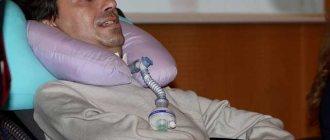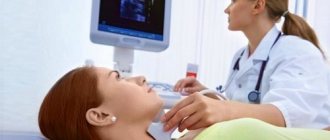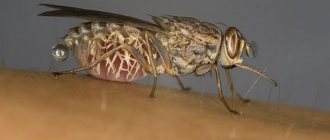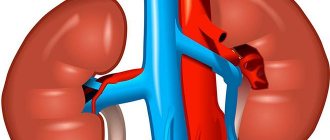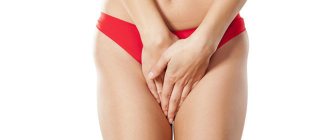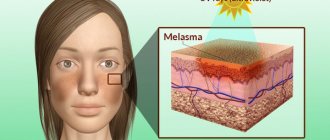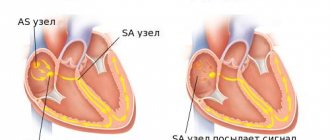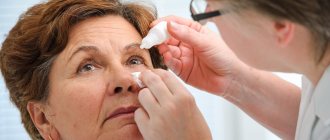In a sea of diseases, you can often encounter those that you definitely heard about somewhere, but don’t remember where. Sometimes there is a word that is good, short and consonant. And it doesn’t matter that you won’t find it in a medical encyclopedia - the main thing, they say, is that such a disease exists. We are talking about a mysterious disease, as some sources write, called “chondrosis .
Some terms fought to defend their right to be used by doctors: for example, radiculitis. And today the concepts of “radiculitis”, “radiculopathy”, “radiculitis pain” are successfully used in doctors’ offices. Radiculitis is treated today at the request of patients, although there is no disease as such. This is a simplified name for radicular pain (and in a literal translation), which is discussed in almost all articles devoted to osteochondrosis, hernia, spondylolisthesis, etc. But people are not interested in reading about radicular pain; it is more interesting and clearer to read about radiculitis.
Chondrosis and the reasons for its development
Chondrosis is a degenerative change in the spinal column. In medicine there are: • cervical chondrosis, • thoracic chondrosis, • lumbar chondrosis.
The main reasons for the development of cervical chondrosis:
• incorrect posture, • inactive lifestyle, • physical inactivity, • prolonged stay in an uncomfortable position.
During the development of spinal pathology, severe damage to the joints in the cervical region is observed, which is fraught with serious consequences. At the same time, doctors emphasize that chondrosis of the thoracic and spinal spine does not have such severe consequences as pathology in the cervical spine. In the latter case, as a result of pinching of nerve endings and compression of the vessels of the circulatory system, cerebral circulation is disrupted. At a more advanced stage, deformation of the intervertebral discs occurs, which affects their normal functioning. Patients complain of severe headaches, weakness, dizziness, and impaired sensitivity in the neck, arms and face.
Main symptoms of the disease
A characteristic feature of the disease is its slow asymptomatic development, which does not allow timely detection of pathology. At later stages of the disease, its treatment can no longer be considered so effective. In any case, everyone should know the symptoms of the disease, which they need to pay attention to and promptly consult their doctor.
So, the main symptoms of pathology in the cervical spine:
• Constant headaches localized to the back of the head. • Severe pain in the heart area, which in its nature strongly resembles angina attacks, is observed in patients with damage to the lower joints of the cervical spine. • Deterioration of vision. • Attacks of weakness, nausea. • Noise in ears. • A characteristic crunch in the neck when turning the head. • Numbness of fingers. • Changes in blood pressure. • Feeling of stiffness in the neck.
Symptoms and diagnostic methods
Symptoms of chondrosis are similar to signs of osteochondrosis. The beginning of the process of destruction of intervertebral discs can be suspected by the following signs:
- pain in certain areas of the spine (usually in the cervical and lumbar regions), which intensifies in the evening and after strong physical exertion;
- lumbago in the lumbar region;
- crunch in the lumbosacral, cervical region;
- pain leading to limited mobility.
Also, some patients experience deterioration in the functioning of the kidneys and digestive system . But even doctors rarely associate problems with digestion and the functioning of the urinary system with the condition of the spine.
The diagnosis can be made by a neurologist after collecting anamnesis, assessing complaints and a thorough examination of the spine.
But chondrosis can be confirmed with the help of such examinations:
- radiography;
- CT scan;
- Magnetic resonance imaging.
When carrying out such diagnostics, it will be possible to see changes in the intervertebral discs.
Treatment tactics for chondrosis should be selected by the doctor, taking into account the patient’s condition. This disease cannot be completely cured. The entire range of therapeutic measures is aimed at stopping the progression of the disease. If the condition worsens, it is important to quickly relieve the aggravation. But it is also necessary to treat chondrosis during the period of remission .
If spinal chondrosis is confirmed, the doctor selects treatment depending on the degree of destruction of the intervertebral discs, taking into account the patient’s complaints.
Can be assigned:
| Group of drugs | Pharmacological properties | Drugs |
| non-steroidal anti-inflammatory drugs | allow you to relieve inflammation and quickly eliminate pain, reduce swelling |
|
| muscle relaxants | allow you to relieve muscle tension and reduce their tone |
|
| analgesics (narcotic and non-narcotic action) | prescribed when NSAIDs are ineffective |
|
| chondoprotectors | allow the restoration of damaged tissues and slow down the progression of the disease |
|
| vitamins and antioxidants | vitamin-mineral complexes are prescribed, which contain large amounts of vitamin B | — |
| sedatives | — | — |
Only the attending physician should prescribe medications. Self-medication for chondrosis can only cause harm .
Exercises, exercise therapy, massage
It is impossible to get rid of chondrosis only with the help of drug treatment . Doctors always prescribe therapeutic exercises. In the first days, it is best to do the exercises under the supervision of a physical therapist. Once you figure out the tactics for performing gymnastics, you can continue to do exercises at home.
There is no universal gymnastics for patients with chondrosis . The doctor selects an individual complex depending on the condition, the affected area, and the presence of symptoms of the disease. Exercise therapy is necessary to strengthen the muscle corset. When performing gymnastics there should be no pain, feelings of overwork or excessive tension.
One of the mandatory components of therapy is massage . It is necessary to take several courses to normalize the condition. Specialists use only gentle techniques so as not to provoke the appearance of muscle spasms and increased pain. Traditional massage techniques are used: kneading, stroking, squeezing.
Contraindications to massage are::
- inflammatory lesions;
- tumors;
- infectious diseases in the acute stage;
- hypertension;
- recent surgery;
- arthrosis;
- polyarthritis;
- pregnancy;
- back diseases.
In case of severe pain, massage is not prescribed.
Treatment at home
The main method of treating chondrosis at home is exercise therapy
If you regularly perform all the prescribed exercises, you can achieve this effect.:
- the back muscles are strengthened, this helps reduce the load on the spinal column;
- the distance between the vertebrae increases, therefore minimizing the likelihood of pinched nerve roots;
- muscle spasm is eliminated;
- metabolic processes and blood circulation are normalized.
Additionally, you can use traditional medicine recipes at home. Healers recommend making compresses from cottage cheese on the problem area, onto which you should first add a few drops of vinegar. They need to be kept for 2-3 hours.
It was noticed that the condition improves if one constantly wears a belt made of sheep or dog hair . You can do any heating of the affected area.
Prevention
You can prevent the development of chondrosis or prevent the progression of the disease if you follow the recommendations of doctors . They advise doing:
- self-massage of the lower back, neck, limbs in the morning;
- morning exercises;
- five-minute warm-ups throughout the workday.
Swimming in a pool is also considered beneficial . The likelihood of developing chondrosis is minimized by maintaining a healthy lifestyle and following the principles of proper nutrition.
Video: “Exercises to prevent spinal chondrosis”
Cervical chondrosis - how to treat it?
Many people are interested in how to treat cervical chondrosis and when to see a doctor? There is only one answer - if the first symptoms of cervical chondrosis appear, you need to immediately contact the clinic and undergo the appropriate examination procedures. As a rule, most often the first symptom of the disease is neck pain. This happens when you turn your head awkwardly. The patient feels sharp, piercing pain in the cervical region, which radiates to the back of the head. Suddenly headache and weakness appear. Such an attack can last 10 days and this already suggests that you cannot joke with him. People call these symptoms “lumbago”. It is worth remembering that vital vessels and nerve endings pass through the neck, so these symptoms should be taken seriously.
Chondrosis of the neck, in the initial stages of development, is treated with a course of 2 months (3-4 procedures per week).
Basic treatment methods:
• manual therapy, • osteopathy, • hirudotherapy, • apitherapy, • kinesiology, • reflexology, • physical therapy, • massage, • physiotherapy, • ointment for chondrosis, • traditional methods.
Modern medicine gives preference to natural preparations that are based on medicinal herbs. However, it is impossible to treat cervical chondrosis without medications.
Important! A massage performed by an inexperienced specialist can aggravate the situation and lead to increased back pain.
Treatment methods for chondrosis
Medical treatment of any type of chondrosis is long-term and consists of eliminating pain, stopping developing dystrophic changes in the spine and restoring normal function of the spinal canals.
Treatment of chondrosis
The pain goes away in a relatively short time thanks to medications, exercise therapy and physical therapy.
Treatment with medications allows you to relieve severe attacks of pain, relieve inflammation and restore normal metabolic processes in the body.
Spinal traction may be prescribed to relieve pain and restore the physical correct curves of the spine. Traction (spinal extension) will increase the space between the vertebrae and create natural curves of the spine.
Manual therapy is useful for chondrosis; it will help you get rid of acute pain and correct your posture. A popular area of manual therapy is visceral therapy. It will improve the mobility of the vertebrae and improve blood circulation in the tissues affected by the disease.
Another healing technique is reflexology. It is combined with medication treatment and will greatly increase the effectiveness of the medications. The pain goes away, the patient's sleep improves and the psyche is restored.
Shock wave therapy is considered the most modern method of treating chondrosis. It is based on the fact that a shock wave can cause changes in the tissues of the human body. Ultimately, the microcrystals of calcium salts are destroyed, and the areas of fibrosis formed in the affected tissue are also destroyed, so the blood flow becomes much stronger. This therapy will help restore the structure of the affected joints, they become elastic and will be able to bear their former load.
Massage is also useful, as it relieves muscle tension and improves blood circulation.
Physiotherapeutic methods for treating chondrosis include treatment with laser, ultrasound, low-frequency currents and much more. Thanks to such procedures, the patient will get rid of pain and inflammation. Physical procedures are also useful during recovery after surgery. These treatment procedures reduce treatment time and increase the conservativeness of general treatment measures.
It is very rare to resort to surgery if conventional treatment is ineffective.
Traditional recipes for chondrosis
1. Treatment with a rolling pin. It will help get rid of pain. You need to take the rolling pin in your right hand and begin to gently tap it on your right shoulder, shoulder blade and spine area. The same procedures are then performed with the left hand, tapping is carried out on the opposite side. The procedure can be done either in the morning or in the evening. You can lie on the floor and put a rolling pin under your back, and then try to ride it.
2. Badyaga. It is used to make rubbing. One part of badyagi powder should be mixed with 30 parts of vegetable oil. Rub the resulting mixture onto the affected area, after which you need to cover it with compressor paper and wrap yourself in a warm scarf.
3. Madder roots. Take a teaspoon of madder roots, previously crushed, and pour a glass of cold water. Boil the roots for ten minutes in a steam bath, then cool and strain them. The decoction should be drunk twice a day in the amount of 100 g before meals. But keep in mind that from such a decoction, after about three days from the start of treatment, the urine will be pink or even red. There is no need to be afraid of this, this is how it should be.
4. Lilac. Pour lilac flowers into a half-liter jar to the very top. Then pour vodka into the lilac. Place the mixture to infuse in a dark place for three weeks, after which it must be strained. Take 30 drops orally before meals three times a day. The general course of treatment is three months.

